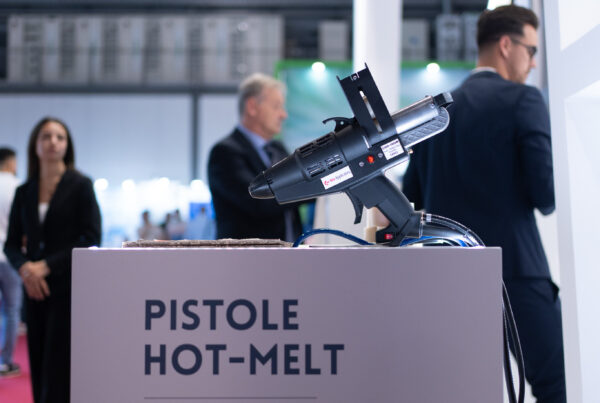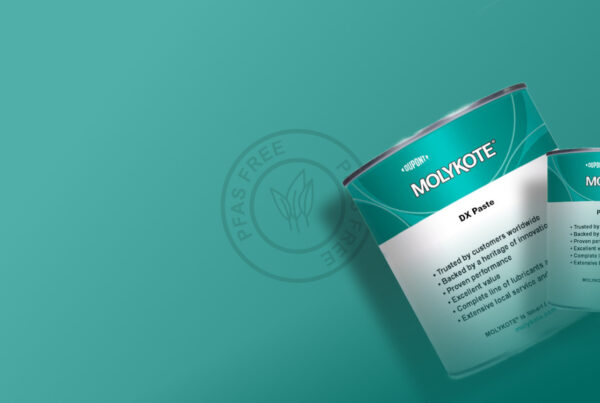Understanding the adhesive technology behind labels can help manufacturers and processors choose the right product for their application.
In this article we explore the different types of label adhesives, adhesive terminology, application considerations, and consumer and environmental benefits.
Types of label adhesives
Label adhesive applications can be divided into three main categories: removable, repositionable and permanent. Assigning the application to one of these categories is the starting point for choosing the right adhesive and indicates the level of adhesiveness the glue should provide. For example, a removable label adhesive should provide sufficient tack to grip the surface at the time of application, without increasing its strength, and will remain in this state until removed. Each type of label has specific functionality and applications.

Permanent labels
Unlike removable or repositionable labels, it should be impossible to remove a permanent label without damaging or distorting it. This makes them ideal for tamper-proof labels, warning labels, including chemical labels, and outdoor labels more generally. Although these label adhesives are inherently more robust than temporary alternatives, the environment and conditions to which they will be subjected must still be taken into account when choosing an adhesive.
Removable labels
As mentioned above, these labels can be easily removed, leaving little or no residue. To achieve this, it is critical to strike a balance between strength and removability, making sure that the stripping strength of the adhesive is perfectly optimized. Food products, pricing labels and promotional stickers are common examples of this application.
Repositionable labels
A subset of removable labels, repositionable labels allow users to remove and reuse them, avoiding permanent creases, wrinkles and bubbles. The most common example is sticky notes.
Terminology of label adhesives
It is helpful to understand the properties of different adhesives and their impact on performance to ensure that the right adhesive is chosen for the application. Properties include:
- Tack: Initial attraction to a surface with minimal pressure. Low tack adhesives are easier to remove from surfaces.
- Adhesion: Strength of the bond between the adhesive and the surface after pressure. Higher adhesion makes the label more difficult to remove and may cause the substrate or label to tear.
- Peel: Force required to remove an adhesive from a surface. Adhesives with lower peel strength are easier to remove.
- Shear: Ability of the adhesive to resist the force applied in opposite directions. Softer adhesives have lower shear strength, higher tack, and can be more easily torn.
- Temperature: The minimum application temperature is the lowest temperature at which the adhesive adheres to the substrate. The service temperature is the minimum and maximum temperature at which the adhesive maintains its strength.
More thoughts on label adhesives
Other elements to consider when choosing an adhesive are the substrate surface, as different adhesives work best with materials such as glass, plastic, and metal.
Application-specific requirements can also affect the type of adhesive to be used. For example, in the food and beverage industry, some containers are hot-filled to sterilize the contents, while carbonated beverage bottles usually expand, putting pressure on the label. The adhesive used for these applications must be suitable for the specific surface, temperature and provide the necessary accommodation to allow the label to stretch.
In addition, environmental concerns are playing an increasingly important role in the choice of label adhesive. For example, the PET beverage industry is moving toward a circular economy model of “reuse,” in which alkali-washable adhesives allow labels and adhesives to be completely removed from PET bottles before they are placed on the market.
Value-added labeling adhesives and services
Using the right adhesive for labeling should be relatively simple: identify the material or container to be adhered to, the basic application (permanent, removable or repositionable), any specific application or service temperature requirements, and other needs such as labels for carbonated containers. Then, you start using the chosen adhesive accordingly.
In practice, each application is unique, and each company has a combination of different machinery, labeling materials, environmental conditions, and performance requirements that require testing the adhesive before it is applied to production.
For this reason, we strongly recommend partnering with a manufacturer who can match an existing adhesive or develop a custom formulation to meet your exact label adhesive needs, providing both laboratory testing of materials and, if necessary, on-site support testing of the new adhesive.



